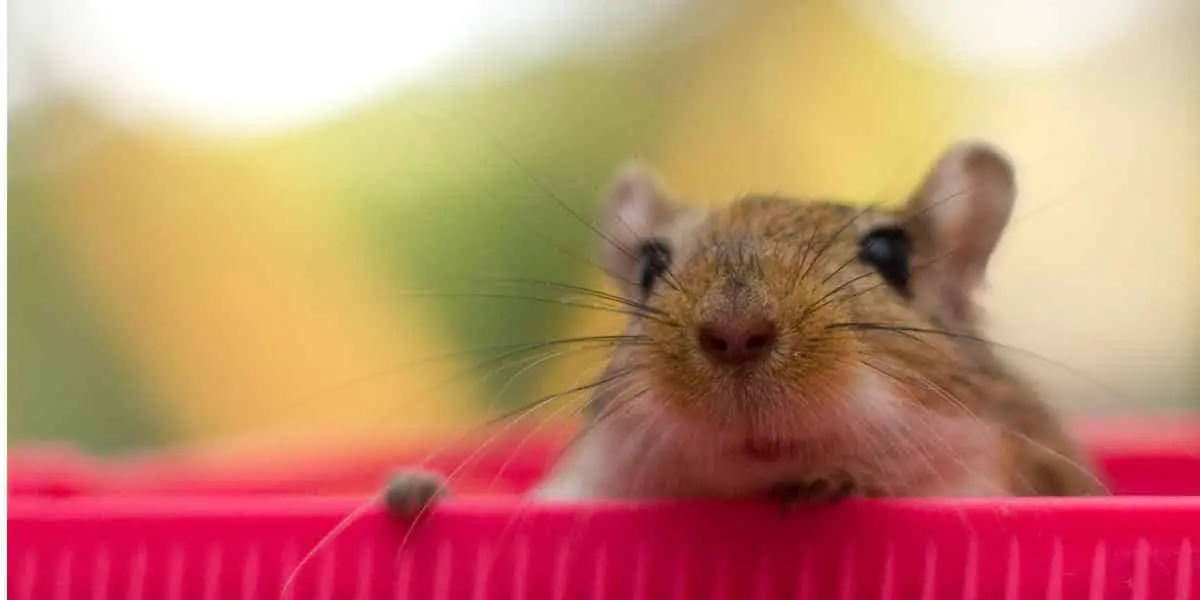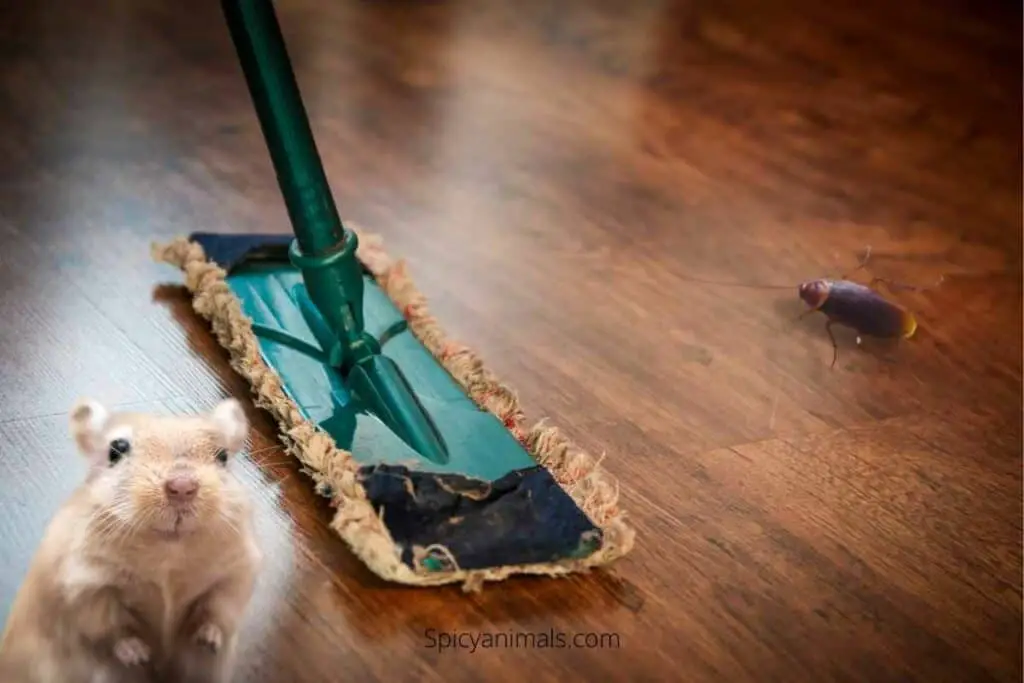Gerbils are small, furry rodents that belong to the subfamily Gerbillinae. They are native to the arid regions of Africa, Asia, and the Middle East. These adorable creatures are known for their curious and social nature, making them popular pets. Gerbils are highly active and require plenty of exercise, so it’s important to provide them with a spacious habitat and opportunities for play. With their soft fur, long tails, and bright eyes, gerbils are not only delightful to watch but also make great companions for both children and adults.
Table of Contents
History of gerbils
The history of gerbils can be traced back to the deserts of Mongolia and Northern China. These small rodents have been domesticated for centuries and were originally kept as pets by the Mongolian nomads. It is believed that gerbils were first introduced to Europe in the 19th century and quickly gained popularity as adorable and low-maintenance pets. Today, gerbils are widely kept as pets around the world, known for their friendly nature and entertaining antics.
Why are gerbils popular as pets?
Gerbils have become popular as pets for several reasons. One of the main reasons is their small size, which makes them suitable for people living in small apartments or houses. Additionally, gerbils are known for their friendly and sociable nature, making them great companions for both children and adults. They are also relatively easy to care for, requiring minimal grooming and maintenance. Another factor that contributes to the popularity of gerbils as pets is their long lifespan, with some gerbils living up to five years or more. Overall, the combination of their size, temperament, and low-maintenance needs makes gerbils a popular choice for many pet owners.

Gerbil Species
Mongolian gerbils
Mongolian gerbils, also known as desert gerbils, are small rodents native to the grasslands and deserts of Mongolia and China. These adorable creatures are known for their sandy-colored fur, long tails, and large, round eyes. Mongolian gerbils are highly adaptable and can thrive in a variety of environments, from hot and dry deserts to cooler grasslands. They are social animals and are often found living in colonies, with each member contributing to the group’s survival. Mongolian gerbils are also popular pets due to their friendly and curious nature. They are relatively easy to care for and can provide hours of entertainment with their playful antics. Whether in the wild or as a beloved pet, Mongolian gerbils continue to captivate and surprise us with their unique characteristics and endearing personalities.
Fat-tailed gerbils
Fat-tailed gerbils are a fascinating species of gerbils known for their unique physical characteristics. As the name suggests, these gerbils have a distinctively fat tail, which serves various purposes. The fat tail of a fat-tailed gerbil acts as a storage reserve, allowing them to store excess fat for times when food is scarce. Additionally, the fat tail also helps them maintain balance and agility while navigating their environment. Fat-tailed gerbils are native to arid regions and have adapted to survive in harsh desert conditions. With their adorable appearance and interesting traits, fat-tailed gerbils are a popular choice among pet owners and enthusiasts.
Desert gerbils
Desert gerbils are fascinating creatures that have adapted to survive in harsh desert environments. These small rodents are known for their ability to conserve water and withstand extreme temperatures. With their long hind legs and strong claws, desert gerbils are excellent diggers, creating complex burrow systems underground. These burrows provide them with shelter from predators and the scorching desert sun. Desert gerbils are also skilled at foraging for food, often relying on seeds, plants, and insects to sustain themselves. Despite their small size, these resilient creatures play a crucial role in maintaining the delicate balance of desert ecosystems.
Gerbil Behavior
Social nature of gerbils
Gerbils are known for their social nature, making them popular pets for many people. These small rodents thrive in the company of others and enjoy interacting with their human owners. They are highly social animals that form strong bonds with their cage mates and exhibit cooperative behaviors. Gerbils communicate through various vocalizations, such as chirping and squeaking, as well as through body language, such as grooming and playing. Their social nature also extends to their breeding habits, as they often mate for life and raise their offspring together. Overall, the social nature of gerbils adds to their charm and makes them fascinating companions for those who appreciate their interactive and engaging personalities.
Gerbil communication
Gerbil communication is a fascinating aspect of their behavior. These small rodents use a variety of vocalizations, body movements, and scent marking to communicate with each other. One of the most common forms of communication among gerbils is through squeaking sounds. They emit different types of squeaks to express various emotions, such as fear, happiness, or aggression. In addition to vocalizations, gerbils also communicate through body language. They use their tails to signal their mood, with an upright tail indicating alertness and a lowered tail suggesting relaxation. Scent marking is another important aspect of gerbil communication. They use scent glands located on their bellies to mark their territory and communicate with other gerbils. Overall, gerbil communication is a complex and intriguing behavior that plays a crucial role in their social interactions.
Gerbil burrowing behavior
Gerbil burrowing behavior is a fascinating aspect of their natural instincts. These small rodents are known for their exceptional digging skills, creating intricate tunnel systems in their habitats. Burrowing serves several purposes for gerbils, including providing protection from predators, regulating body temperature, and storing food. It is truly impressive to observe how these tiny creatures can transform their environment with their burrowing abilities. Whether it’s creating a cozy nest or searching for hidden treasures, gerbils demonstrate remarkable adaptability and resourcefulness through their burrowing behavior.
Gerbil Care
Housing requirements
Gerbils have specific housing requirements that are essential for their well-being. They need a spacious and secure cage that allows them to exercise and explore. The cage should have solid flooring to prevent any injuries to their delicate feet. Gerbils are burrowing animals, so providing them with deep bedding material, such as wood shavings or shredded paper, is important. Additionally, the cage should have multiple levels or platforms for the gerbils to climb and play on. It is also crucial to provide them with hiding spots, such as tunnels or small houses, where they can retreat and feel safe. Regular cleaning and maintenance of the cage is necessary to ensure a clean and healthy environment for the gerbils. By meeting these housing requirements, gerbil owners can create a comfortable and stimulating home for their furry friends.
Feeding gerbils
Feeding gerbils is an essential aspect of their care. These small rodents have specific dietary needs that must be met to ensure their health and well-being. Gerbils are omnivores, meaning they eat both plant-based and animal-based foods. Their diet should consist of a variety of fresh fruits and vegetables, high-quality pellets or grains, and occasional protein sources such as insects or cooked meat. It is important to provide a balanced and nutritious diet to prevent nutritional deficiencies and promote proper growth and development. Additionally, gerbils require a constant supply of fresh water to stay hydrated. It is recommended to provide them with a water bottle or a shallow dish of water that is cleaned and refilled regularly. By providing a proper diet and access to clean water, you can ensure that your gerbils stay healthy and happy.
Gerbil health and grooming
Gerbil health and grooming are essential aspects of caring for these small and adorable creatures. Maintaining good gerbil health involves regular check-ups with a veterinarian, ensuring a balanced diet, and providing a clean and spacious living environment. Additionally, gerbils require regular grooming to keep their fur clean and free from tangles. This includes brushing their fur gently and trimming their nails when necessary. By prioritizing gerbil health and grooming, owners can ensure that their furry friends lead happy and healthy lives.
Gerbil Reproduction
Gerbil mating behavior
Gerbil mating behavior is a fascinating aspect of their lives. These small rodents have unique courtship rituals and reproductive strategies. Unlike many other animals, gerbils form monogamous pairs and mate for life. They engage in elaborate displays of affection, such as grooming each other and engaging in playful behavior. Gerbil mating is a carefully coordinated process, with the male initiating courtship by approaching the female and engaging in a series of scent-marking behaviors. Once the female is receptive, mating occurs quickly and lasts only a few seconds. After mating, the female will give birth to a litter of pups in about 25 days. It is truly remarkable to witness the intricacies of gerbil mating behavior and the dedication they have to their lifelong partners.
Gerbil pregnancy and birth
Gerbil pregnancy and birth are fascinating processes that showcase the remarkable abilities of these small rodents. Female gerbils have a gestation period of approximately 25 to 26 days, during which they undergo significant physical and hormonal changes. Unlike many other mammals, gerbils can have multiple litters in a year, with each litter typically consisting of 4 to 6 pups. The birth itself is a quick and efficient process, with the mother gerbil delivering the pups within a span of a few hours. Once born, the baby gerbils are blind, hairless, and completely dependent on their mother for survival. It is truly awe-inspiring to witness the nurturing instincts of the mother gerbil as she cares for her newborns, providing them with warmth, milk, and protection. Gerbil pregnancy and birth are remarkable events that highlight the resilience and adaptability of these adorable creatures.
Gerbil offspring care
Gerbil offspring care is a fascinating aspect of these small rodents’ lives. Unlike many other animals, gerbils are highly social creatures that actively participate in raising their young. Both the male and female gerbil play important roles in caring for their offspring. The female gerbil will give birth to a litter of pups, usually ranging from 2 to 8 babies. The male gerbil will assist in providing food and protection for the newborns. They will also help groom and keep the nest clean. This cooperative parenting behavior is essential for the survival and well-being of the gerbil offspring. It is truly remarkable to witness the dedication and teamwork displayed by gerbil parents in ensuring the health and development of their young.
Fun Facts About Gerbils
Gerbils can jump up to 12 inches
Gerbils are known for their impressive jumping abilities. It may come as a surprise, but these small rodents can actually jump up to 12 inches in height. This remarkable feat is made possible by their strong hind legs and agile bodies. Whether it’s to escape predators or reach elevated areas for food, gerbils have developed this skill as a means of survival. Their ability to jump such heights showcases their incredible athleticism and adaptability in their natural habitats.
Gerbils have excellent hearing
Gerbils have excellent hearing. Their sense of hearing is highly developed, allowing them to detect even the slightest sounds. This keen sense of hearing helps gerbils navigate their surroundings and stay alert to potential threats. They can easily pick up on the rustling of leaves, the scurrying of insects, or the faintest squeak of a fellow gerbil. This acute hearing also enables gerbils to communicate with each other through a variety of vocalizations, including chirps, squeaks, and purrs. It is truly remarkable how gerbils rely on their exceptional hearing abilities to thrive in their environment.
Gerbils have a lifespan of 2-4 years
Gerbils have a relatively short lifespan, typically ranging from 2 to 4 years. Despite their small size, gerbils pack a lot of life into those few years. They are known for their energetic and active nature, constantly scurrying around their habitat and engaging in various playful activities. This short lifespan makes it all the more important for gerbil owners to provide them with a safe and enriching environment to ensure they live their best lives. It’s fascinating to witness how much joy and companionship these tiny creatures can bring, even in their relatively short time with us.



